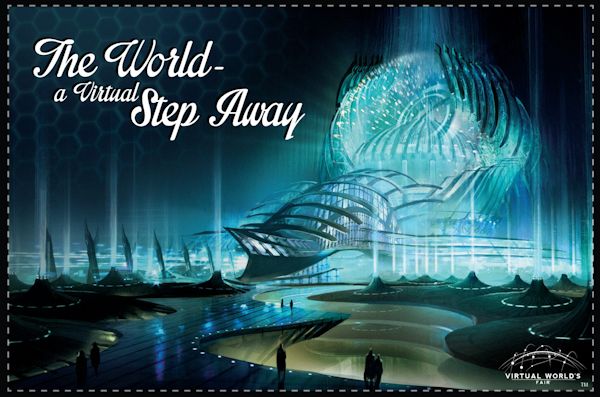[Here’s an ambitious plan for a 21st century virtual World’s Fair; this story is from Variety and there’s more coverage in Fortune; the Landmark press release is available via PR Newswire, and an earlier story in ISPR Presence News describes the company’s plans for mixed reality theme parks. –Matthew]
Landmark Entertainment Is Building A Virtual Reality World’s Fair
October 15, 2015
Janko Roettgers, Senior Silicon Valley Correspondent
Landmark Entertainment President and CEO Tony Christopher thinks it’s about time that the world joined virtual reality: Landmark is unveiling plans to build what it calls a Virtual world’s fair, which could eventually house hundreds of pavilions and become a space for millions of consumers to meet, enjoy entertainment, shop and even take civic action. “It’s the world coming together to celebrate the world,” Christopher said during a recent interview.
However, Landmark’s Virtual World’s Fair isn’t going to launch anytime soon. The company plans to launch the platform in 2017, likely during the second half of that year. That’s because it will take some time to build the environment — Christopher said that Landmark plans to have up to 100 pavilions available at launch. Landmark also wants to wait until VR headsets like the Oculus Rift, which isn’t going to ship until early next year, are going to be widely available.
Of course, that’s a bit of a chicken-and-egg problem: Consumers won’t buy these headsets, which are initially going to be quite expensive, without compelling content and experiences. And Christopher doesn’t want to wait two years. “Somebody has to create that killer platform,” he said, adding: “It has to happen now.”
That’s why Landmark is planning to release a first experience, dubbed the Pavilion of Me, in about a year. The Pavilion of Me will offer consumers the ability to listen to music, watch videos, enjoy their personal media, video chat and even shop in a VR environment. Essentially, it will offer many of the things people already do with their computers, only in an animated VR space.
An early prototype shown to Variety made heavy use of the pavilion metaphor, letting users travel with a kind of elevator from floor to floor to explore different types of use. Throughout the experience, a robotic personal assistant and its pet functioned as guides, cracking jokes and letting users know what they could do in each area.
Christopher said that Landmark wants to use the Pavilion of Me as a kind of daily utility that gets users to regularly come back and explore VR. The company plans to release it with a freemium model, allowing users to personalize parts of their experience for free, but ask them to pay for others.
Later on, Landmark then wants to integrate that Pavilion of Me into the Virtual World’s Fair, which will host different sections based around the age and interests of its users. A section called “Dataland” will host experiences for smaller children; a “Passportal” will allow to virtually travel to and explore national parks, museums, concerts and other places and events around the world; a separate section will allow brands to advertise and sell their goods; something called the “Tower of humanity” will invite users to learn about issues, take action and donate. “We want to be seen as a project that is meaningful,” Christoper said.
Pulling all of that off in two years is a very ambitious undertaking, even for a company that has been building entertainment experiences for 35 years. Christopher said that he has a team of 30 working on its virtual reality projects, and that Landmark is looking to partner with tech companies on the creation of both projects. The company is in the process of finalizing a round of funding for its new VR subsidiary, he added. Landmark has also announced that it is building an on-location VR experience in China.
Landmark Entertainment may sound like an unlikely company to get into virtual reality, but for Christopher, it’s only a continuation of what his team has been doing for the past decades. Landmark has built a number of theme park attractions for Universal Studios and other clients, using 3-D projections and sensory experiences to make audiences believe they were really in the middle of the action for rides like “Terminator 2: 3-D.” “We were doing virtual reality in the hardest way,” said Christopher during an interview with Variety earlier this year.
Sill, Landmark will have its work cut out for itself, in part because it will have to compete against a number of other companies. One of them is Linden Lab, the maker of the Second Life virtual world. Linden Lab is currently building a new VR-optimized world code-named Project Sansar that promises many of the same things as the Virtual World’s Fair — and it’s built by a company with many years of experience in running online services.
But Christopher is determined, and he thinks the time is right for bold moves in virtual reality. “We believe it’s happening now,” he said.
